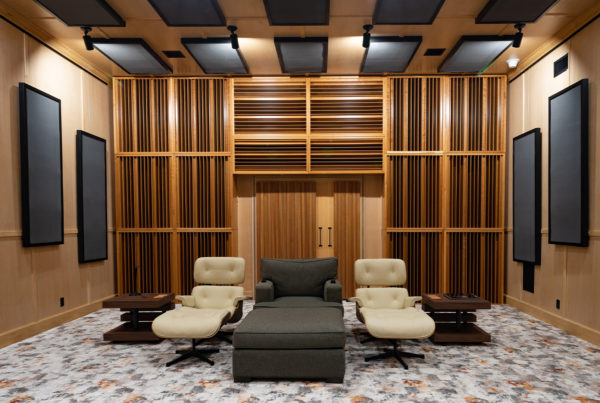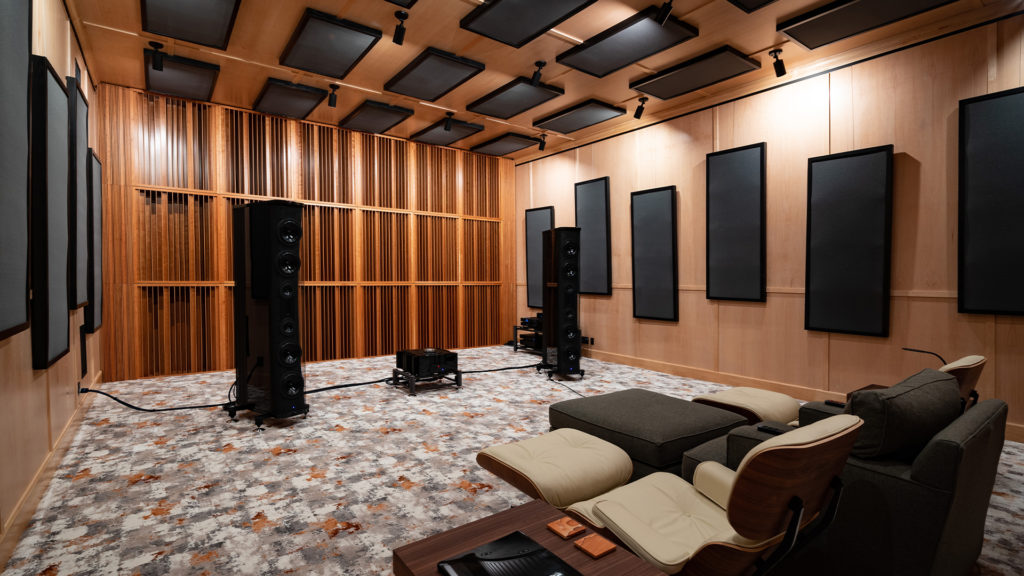
Table of Contents
The Importance of Proper Speaker Setup for Optimal Sound Quality
Setting up your speakers in a two channel or multiple channel system is critical in achieving the stereo effects with two channels and the multiple channels sonic effects required of multiple channel systems. In a two channel system, setting up speakers requires a tape measure. If your room is rectangular, you will set up on the long wall. The speakers will be a minimum of 4′ from all room boundary surfaces.
Make sure the distance between the speakers is equal to the distance from speakers to listening position. Setting up speakers is a process. You will start with these guidelines and then adjust to suit your individual tastes. Some will prefer near field listening. Some will prefer a farther field of listening.
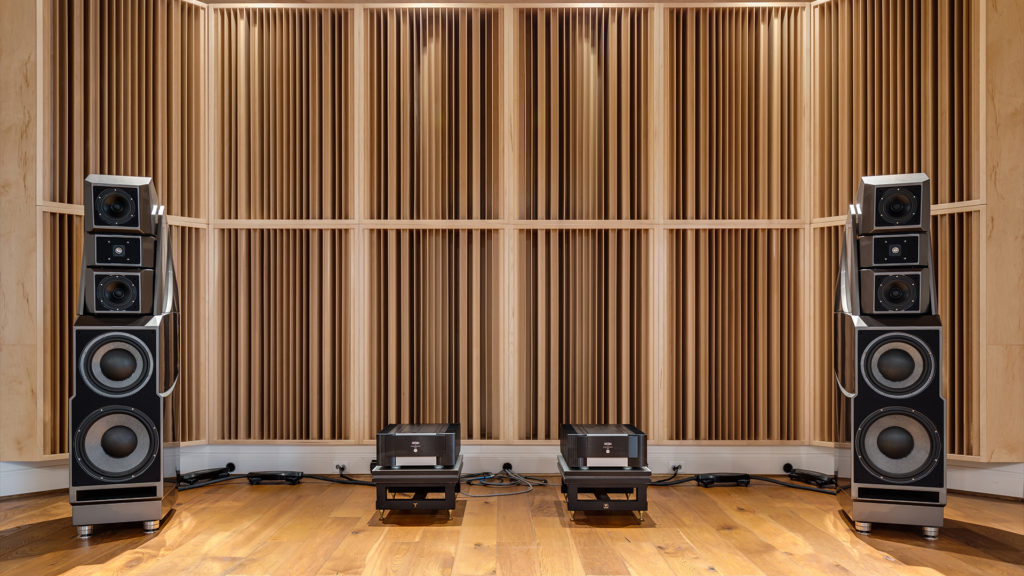
Near Field Listening: Achieving Higher Resolution
A near field setting up of speakers will produce the highest resolution. Since you are sitting close to your speakers, you have less reflections from the room walls and ceiling. Less reflections means less room sound. The straight line energy from your speakers to your ears is the purest form of sound you can hear. It is the sound that travels in a straight line to your ear.
It is the sound that travels the shortest distance. The shortest distance between two points is a straight line. Everything else you hear is reflection based or another term is room sound. Sitting nearfield allows the user to hear more direct than reflected energies.
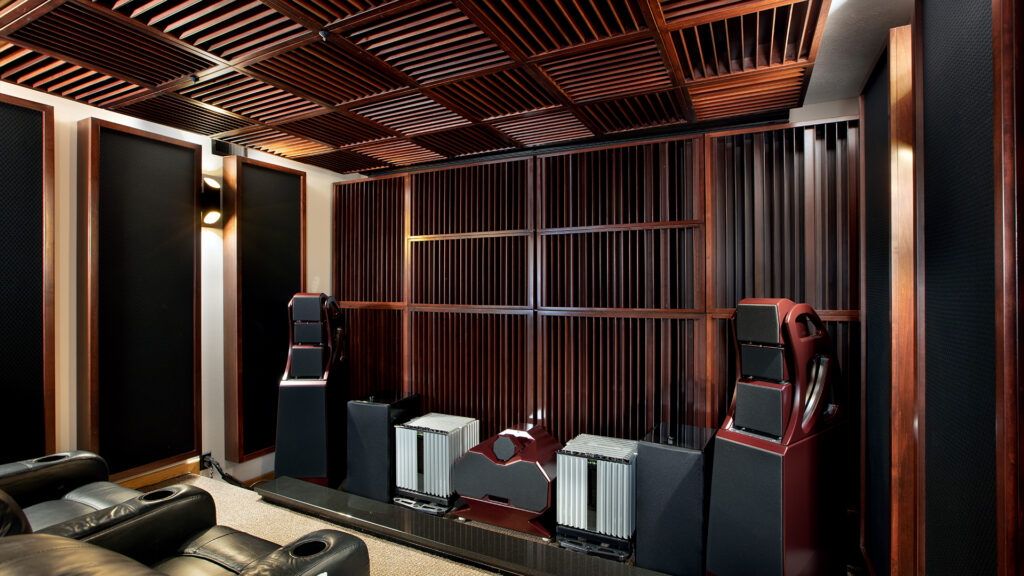
Far Field Listening: Balancing Direct and Room Sound
A far field setup will bring in more room sound. The further you sit from source, the more of the room sound you bring into the sonic presentation value. The sound you hear at your listening position is a combination of the direct or straight line energy from a source (speakers) and the reflections from the walls, floor, and ceiling.
The final sound quality is a combination of those two forces. If you have too much room sound, you have too much reverberation which is a form of middle and high frequency distortions. If you do not have enough, the sound quality will be too rigid and defined without life. Balancing reverb and direct energies requires absorption treatment with the proper rates and levels of absorption for music and voice.
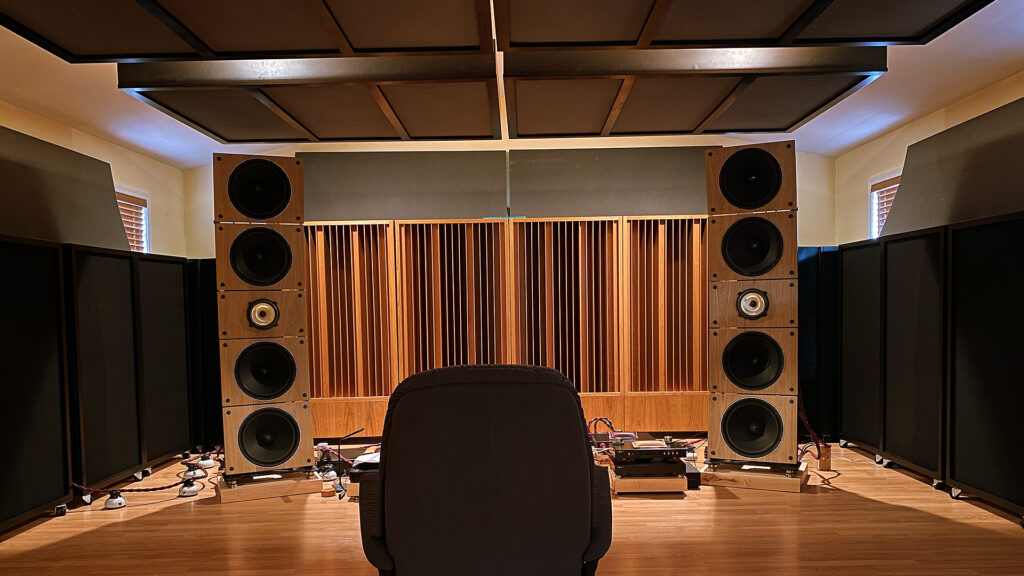
Managing Room Dimensions and Boundaries for Speaker Setup
When you are working with any two channel system setting up speakers, amps, gear, whatever the usage requires, you must take into account the room dimensions. The enemy to any speaker is a wall, floor, or ceiling. A room boundary surface produces two types of acoustical issues. A boundary surface produces both pressure and reflection issues.
Pressure is produced by low frequency waves of energy that oscillate throughout the room every 36 – 48″ You must have the proper type of treatment, you must have the proper amount of it along with the proper placement within the room. Your goal is to produce a pressure reduced environment along with a reflection free zone.
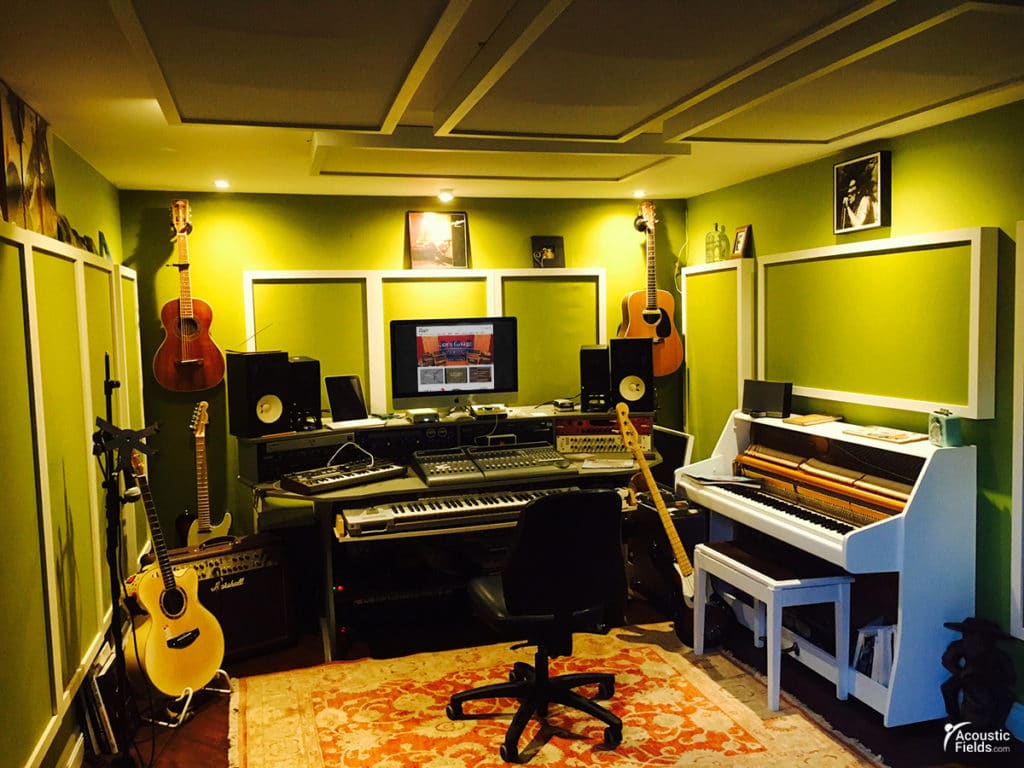
Addressing Reflections and Pressure Issues in Speaker Setup
Reflections from the walls, floor, and ceilings interfere with the direct sound from your speakers. The direct sound is the straight line energy from your speakers directly to your ears. It is the sound that travels the shortest distance to your ears. Since it is straight, ray, energy, it contains no reflections or room sound. Room boundary reflections must have their speed checked by radar.
The sound absorption technology used to manage the reflection only manages its strength or amplitude, not its direction. The reflection keeps driving down the road, it is ust now after treatment, it is driving much slower. We must slow the speed of the reflection or as is more technically accurate, its time signature down below the direct speaker sound. At Acoustic Fields, we can assist you with the setting up process. If you start with the proper set up, treatment is much easier to apply correctly.
Setting Up Speakers FAQ
How far should speakers be from walls when setting up a stereo system?
In a two-channel stereo system, speakers should generally be placed at least 4 feet away from room boundary surfaces (walls). If the room is rectangular, positioning the speakers along the longer wall is recommended. Equal distance between the speakers and the listening position is crucial for achieving balanced sound and optimal stereo imaging.
What is the ideal distance between speakers in a two-channel setup?
The distance between the speakers should match the distance from each speaker to your listening position. For example, if your speakers are 6 feet apart, your listening position should also be 6 feet away from each speaker. This ensures you sit in the “sweet spot,” maximizing stereo effects and sound clarity.
What is the difference between near-field and far-field speaker placement?
In a near-field setup, you sit closer to the speakers, reducing reflections from the walls, floor, and ceiling, leading to a clearer and more accurate sound. This is ideal for critical listening. A far-field setup introduces more room sound as reflections from the environment mix with the direct sound, creating a more spacious audio experience. Each approach has its benefits depending on your preference and the room’s acoustics.
Why is speaker placement important for home theater or multi-channel systems?
In a multi-channel setup, proper speaker placement is critical for creating immersive sound effects, especially for movies and surround sound formats. Front speakers should follow the same guidelines as stereo setups, but rear and side speakers need careful placement to ensure balanced sound throughout the room. Calibration and sometimes acoustic treatment are essential for minimizing distortion and room reflections.
How do room dimensions affect speaker setup?
Room dimensions play a significant role in speaker performance. Small rooms with hard surfaces tend to amplify reflections, leading to muddled sound, while larger rooms can cause sound to feel too distant or hollow. Proper speaker placement, combined with room treatment (like absorption panels), helps control these reflections and improve overall sound quality. Always consider room dimensions and experiment with placement for the best results.






